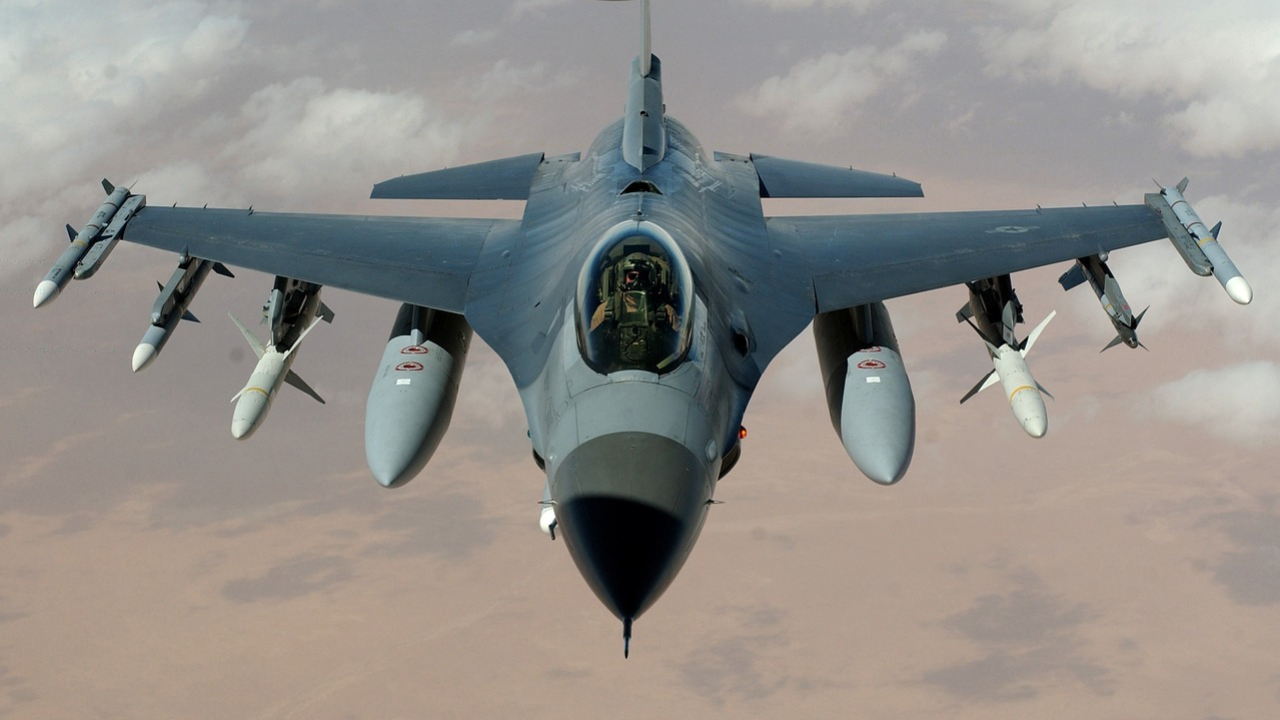The F-16 Fighting Falcon, widely recognized as one of the most formidable fighter aircraft of all time, has been an enduring symbol of air superiority and multirole capabilities since its introduction in the late 1970s. Developed by General Dynamics (now Lockheed Martin), the F-16 was initially conceived as a lightweight, cost-effective fighter, but over the decades it has evolved into a versatile aircraft capable of excelling in air-to-air combat, ground attacks, and reconnaissance missions. Here’s a closer look at what makes the F-16 Fighting Falcon so unique and why it remains a pillar of many air forces around the world.

Origins and Development
The origins of the F-16 date back to the 1970s, when the United States Air Force sought a new generation of lightweight fighters to enhance its fleet. With the goal of creating an agile aircraft with superior dogfighting capabilities, General Dynamics developed the F-16 with a unique focus on maneuverability, acceleration, and simplicity in design. The result was a single-engine aircraft that has consistently proven its mettle over various theaters of combat worldwide.

Revolutionary Design and Features
One of the key factors behind the F-16's success is its sophisticated design. Unlike earlier fighters, the F-16 introduced a frameless bubble canopy, giving pilots superior visibility during engagements. Its fly-by-wire flight control system was a revolutionary feature that provided pilots with greater control and reduced pilot workload during complex maneuvers. These advancements combined to make the F-16 one of the most maneuverable aircraft in the skies.

With a top speed exceeding Mach 2, the F-16 is powered by a single General Electric or Pratt & Whitney engine, providing it with remarkable thrust-to-weight ratios. This makes it a formidable adversary capable of high-speed engagements and quick ascents, while its internal cannon and multi-role capabilities ensure it can deploy a vast range of ordnance for various missions. From precision-guided bombs to air-to-air missiles, the F-16 is equipped for a range of mission profiles.
Types and Variants of the F-16

Over its storied service life, the F-16 has been produced in numerous variants, each tailored to meet different mission requirements and technological advancements. The F-16A/B models marked the initial versions, with the B variant being a two-seat trainer. The F-16C/D variants introduced in the 1980s offered more powerful radar systems, improved avionics, and weapon compatibility.

More recently, the F-16E/F "Block 60" or "Desert Falcon" variant, produced for the UAE Air Force, boasts advanced radar and conformal fuel tanks for extended range. Meanwhile, the F-16V "Viper" is the most modernized version, featuring an AESA radar, advanced cockpit displays, and superior networking capabilities for modern warfare needs. These different types showcase the aircraft's adaptability and ongoing evolution to meet modern combat demands.



The F-16 is renowned for its unmatched versatility and maneuverability, which is brilliantly showcased in aerobatic displays with the U.S. Air Force Thunderbirds. Performing intricate maneuvers and high-speed passes, the Thunderbirds highlight the F-16's agility, precision, and ability to execute complex flight routines, captivating audiences worldwide and demonstrating the aircraft's exceptional capabilities.

While the F-16 Fighting Falcon is a multirole fighter used in various military operations, the Thunderbirds' F-16s are specially configured for aerobatic performances. These modifications include the removal of certain weapons systems and the addition of smoke generators for visual effects during their flight routines.


Versatility and Combat History
What truly sets the F-16 apart from many other fighter jets is its versatility. Throughout its service history, the F-16 has been deployed in air superiority missions, ground support operations, reconnaissance roles, and even electronic warfare. Countries around the globe—including the United States, Israel, Belgium, Turkey, and South Korea, to name a few—have relied on the F-16 for their air forces. The Falcon's adaptability has seen it play a role in major conflicts, including the Gulf War, Kosovo War, and more recent conflicts in the Middle East.

Modernization and Upgrades
To maintain its relevance over four decades, the F-16 has undergone extensive upgrades. The modern F-16 variants boast advanced avionics, radar systems, and weapon capabilities. The F-16V Viper, for instance, features upgraded AESA (Active Electronically Scanned Array) radar, an advanced mission computer, and improved electronic warfare systems. These upgrades ensure that the F-16 remains competitive against modern threats and adversaries.
The F-16 in Popular Culture
The F-16 Fighting Falcon has also become an icon in popular culture, often depicted in movies, TV shows, and even video games. Notable films such as *Iron Man* (2008), *Top Gun: Maverick* (2022), and *The Rock* (1996) feature the F-16 in thrilling aerial combat scenes, showcasing its unmatched agility and firepower.
Its sleek design and combat prowess have made it a favorite among enthusiasts, hobbyists, and aviation buffs. Scale models of the F-16 are popular in the modeling community, with various kits available that celebrate its storied career. The aircraft’s enduring appeal extends to the modeling community, where scale models of the F-16 are highly sought after. Various model kits honor its legacy, allowing fans and hobbyists to recreate this iconic jet and celebrate its storied career.

Continuing Legacy
Today, the F-16 Fighting Falcon continues to fly with air forces across more than 25 countries, demonstrating its enduring appeal and effectiveness. As the demand for efficient, versatile, and cost-effective combat aircraft grows, the F-16 remains relevant due to continuous upgrades and modernization programs. Newer F-16 variants integrate cutting-edge technology to remain competitive with fifth-generation fighters, while many air forces continue to depend on its battle-proven legacy.

The F-16 Fighting Falcon represents more than just military power; it stands as a testament to the creativity and innovation that can make a design timeless. For pilots, it is a symbol of agility, strength, and reliability; for nations, it offers a potent tool for defense and security. As technology advances, the F-16’s legacy of excellence continues to evolve, cementing its place as one of the most beloved and iconic aircraft in aviation history.















